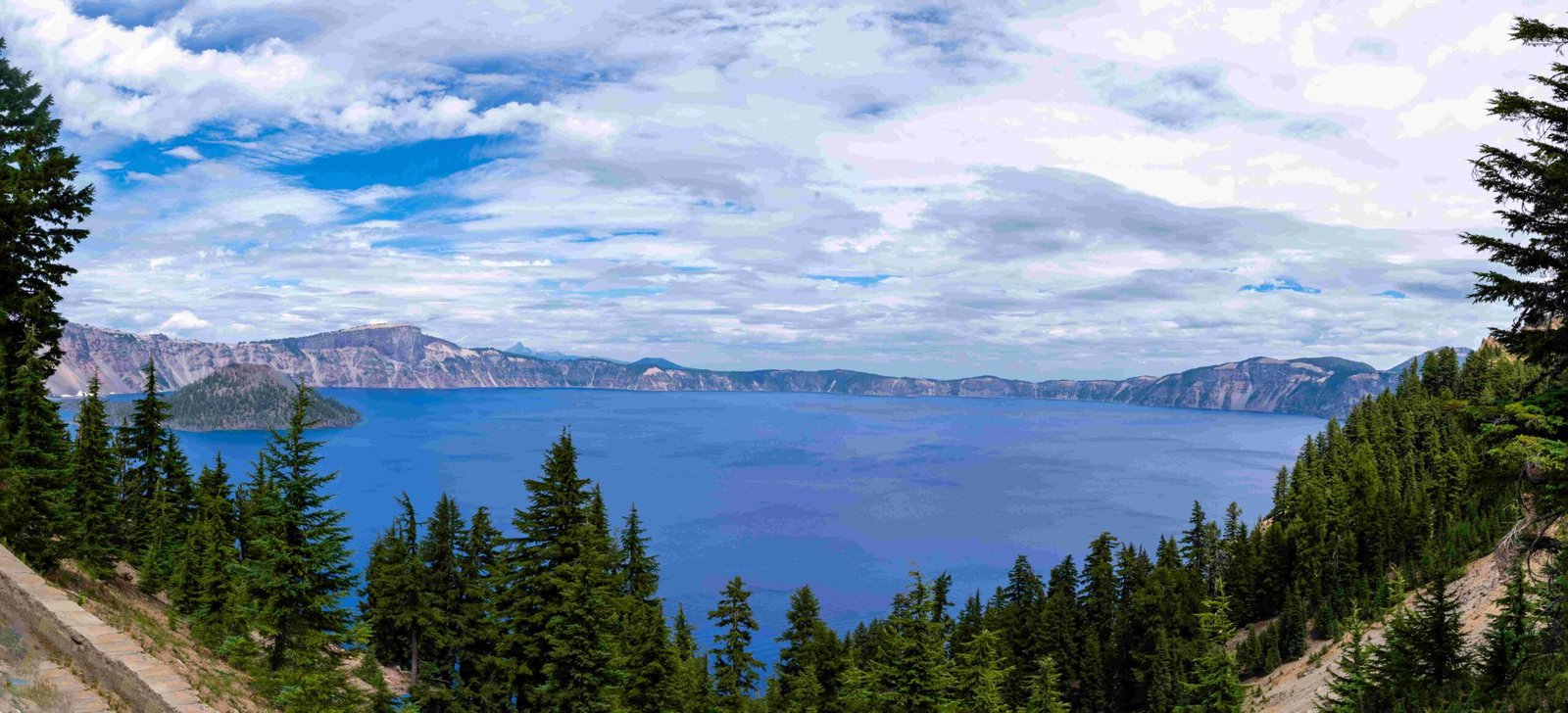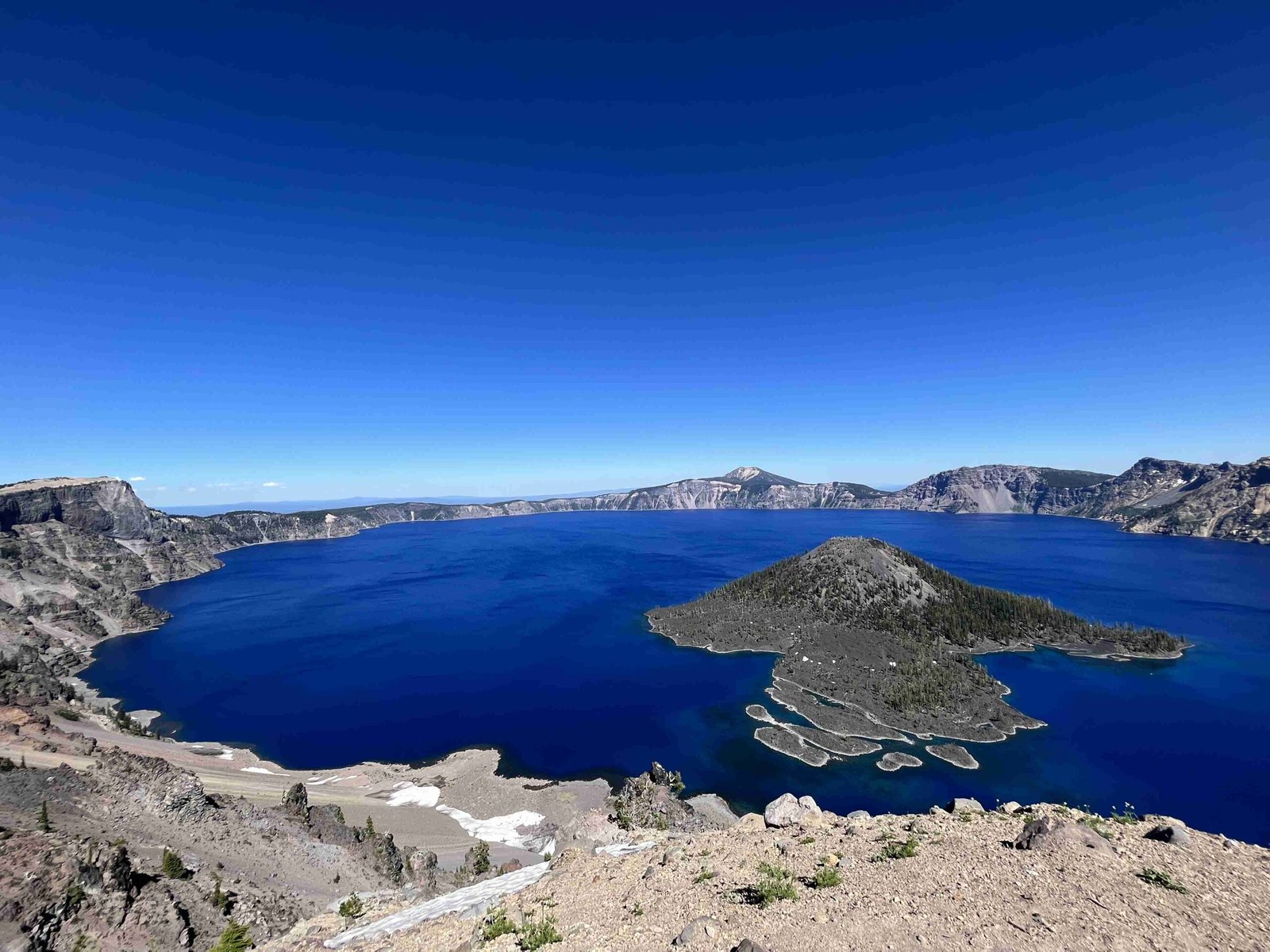Crater Lake, located in Oregon, is renowned for its stunning blue waters and impressive depth. Many visitors wonder if this magnificent lake is bottomless. The answer is no – Crater Lake is not bottomless. It has a well-documented maximum depth of 1,949 feet (594 meters), making it the deepest lake in the United States and one of the deepest in the world. Despite its finite depth, Crater Lake’s geological history, crystal-clear waters, and unique ecosystem continue to captivate scientists and tourists alike.
What is the True Depth of Crater Lake?

Crater Lake’s maximum depth was accurately measured at 1,949 feet (594 meters) during a multibeam survey conducted in 2000. This impressive depth places Crater Lake as:
- The deepest lake in the United States
- The second-deepest lake in North America (after Great Slave Lake in Canada)
- The seventh or eighth deepest lake globally (depending on whether subglacial Lake Vostok in Antarctica is included)
To put this depth into perspective:
| Comparison | Height/Depth |
|---|---|
| Crater Lake Maximum Depth | 1,949 feet (594 meters) |
| Empire State Building | 1,454 feet (443 meters) |
| Eiffel Tower | 984 feet (300 meters) |
As you can see, if you could stand the Empire State Building upright in the deepest part of Crater Lake, its top would still be nearly 500 feet underwater!
How Was Crater Lake Formed?

The extraordinary depth of Crater Lake is a result of its volcanic origin. Here’s a brief timeline of its formation:
- About 7,700 years ago: Mount Mazama, a large volcano, erupted violently.
- The eruption emptied the magma chamber beneath the volcano.
- Without support, the mountain collapsed inward, forming a caldera.
- Over time, the caldera filled with water from rain and snowmelt, creating Crater Lake.
This unique formation process contributed to the lake’s impressive depth and its lack of inlets or outlets, which helps maintain its pristine water quality.
Why Do People Think Crater Lake Might Be Bottomless?
Several factors contribute to the misconception that Crater Lake might be bottomless:
- Visual Illusion: The lake’s extraordinary clarity can make it difficult to gauge its depth visually.
- Steep Walls: The caldera’s steep walls plunge quickly into deep water, creating an illusion of endless depth.
- Local Legends: Native American folklore and early settlers’ tales often described the lake as bottomless, adding to the mystique.
- Limited Access: Until modern sonar technology, accurately measuring the lake’s depth was challenging.
How Does Crater Lake’s Depth Compare to Other Lakes?
While Crater Lake is impressively deep, it’s not the deepest lake in the world. Here’s how it compares to some other notable deep lakes:
- Lake Baikal, Russia: 5,387 feet (1,642 meters)
- Lake Tanganyika, Africa: 4,823 feet (1,470 meters)
- Caspian Sea: 3,363 feet (1,025 meters)
- Lake Superior: 1,332 feet (406 meters)
- Crater Lake: 1,949 feet (594 meters)
What Makes Crater Lake’s Depth Unique?
Despite not being the deepest lake globally, Crater Lake’s depth is remarkable for several reasons:
- Clarity: Its depth contributes to its famous clear, blue water.
- Isolation: No rivers flow into or out of the lake, preserving its purity.
- Compact Size: Its depth-to-surface area ratio is exceptional.
- Scientific Value: The lake’s depth and isolation make it an important site for ecological and limnological studies.
Can Visitors Explore Crater Lake’s Depths?
While the deepest parts of Crater Lake are off-limits to casual visitors, there are several ways to experience and appreciate its depth:
- Boat Tours: Ranger-led boat tours provide insights into the lake’s geology and ecology.
- Rim Drive: A 33-mile scenic road offers stunning viewpoints of the lake.
- Visitor Centers: Educational exhibits and park rangers offer information about the lake’s unique features.
- Hiking Trails: Trails around the rim and down to the lake shore offer different perspectives on the lake’s size and depth.
What Scientific Research is Conducted in Crater Lake?
The unique characteristics of Crater Lake make it a valuable site for various scientific studies:
- Limnology: Research on the lake’s physical and chemical properties.
- Ecology: Studies of the lake’s unique ecosystem and endemic species.
- Geology: Investigations into the volcanic history and ongoing geological processes.
- Climate Change: Long-term monitoring of the lake’s response to climate variations.
How Does Crater Lake’s Depth Affect Its Ecosystem?
Crater Lake’s depth plays a crucial role in shaping its ecosystem:
- Temperature Stratification: The lake’s depth creates distinct temperature layers, influencing species distribution.
- Light Penetration: Despite its clarity, sunlight only penetrates the upper layers, affecting photosynthesis and organism distribution.
- Nutrient Cycling: The lake’s depth and isolation create a unique nutrient cycle, supporting a delicate ecological balance.
- Species Adaptation: Some organisms have adapted to the lake’s deep, cold waters, including endemic species found nowhere else.
What Are Some Interesting Facts About Crater Lake’s Depth?
- The lake contains approximately 4.9 trillion gallons of water.
- It would take about 800 years to refill the lake if it were emptied.
- The water in Crater Lake is replaced naturally every 250 years.
- The lake’s surface is about 6,178 feet above sea level.
- The caldera rim rises 500 to 2,000 feet above the lake’s surface.
In conclusion, while Crater Lake is not bottomless, its impressive depth, clarity, and unique ecosystem make it a natural wonder worth exploring and preserving. Its finite yet formidable depth continues to inspire awe and scientific curiosity, ensuring that Crater Lake remains a jewel in America’s natural heritage.

